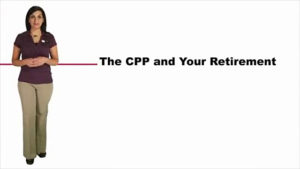
My latest MoneySense Retired Money column was published earlier today: click on the headline Retirement Tax Tips for full version.
As I say at the end of the column, after decades of the RRSP contribution habit, I admit it goes against the grain to start decumulating. And even more so, it’s counterintuitive to pay taxes on investment funds before you HAVE to.
However, to paraphrase the famous Fram Oil Filters TV commercial, you can pay me now or you can pay me more later — much more later. (For the famous 1972 “Pay me now or pay me later” Fram Filter ad, click on this YouTube link.)
Since tax is one of the biggest, if not THE biggest expense in retirement, I’d rather pay a little tax now prematurely than a lot of tax later.
Live on early RRSP withdrawals and defer CPP benefits

So what has this got to do with RRSPs and taxes? As the column points out in detail, citing Emeritus Retirement Solutions’ Doug Dahmer, at some point those great tax refunds from decades of RRSP contributions eventually come back to haunt you. Usually that’s when you turn 71 and are forced to start making annual, and taxable, withdrawals from Registered Retirement Income Funds or RRIFs. (you can opt instead to annuitize or to cash out and pay a ton of tax upfront).
In practice, most will choose to take RRIF withdrawals starting at the end of the year you turn 71, but if you also have a good employer pension, the usual government pensions and other income sources, there’s a good chance some of those withdrawals will be at or near the top marginal tax rate, which these days ranges from 46% to more than 50%, depending on your income and the province in which you reside. And as the MoneySense column mentions, if you’re in the OAS clawback zone, you may have to add a further 15% to the government’s haul.
But if you’re semi-retired and “basking” in a relatively low tax bracket in your Sixties, you may be able to start withdrawing RRSP funds earlier than necessary, which may make sense if it’s only being taxed at 20 or 30%. Plus, as Dahmer suggests, by living on some of this relatively low taxed early RRSP funds you can defer the receipt of Canada Pension Plan (CPP) benefits and possibly Old Age Security benefits to as late as 70.
Every year you can defer taking CPP by living instead on early RRSP withdrawals, the CPP benefit will be 8.4% higher. Dahmer poses the rhetorical question whether your RRSP can generate an annual return of 8.4%. These days you certainly can’t generate that return with fixed-income and after all, we’re talking about people who by now should have a good percentage (perhaps 50%) in fixed-income. You may or may not get 8.4% from stocks but if you do, you’re also subjecting your portfolio to possible capital losses.
For one of Dahmer’s decumulation blogs published here at the Hub, click on Timing of CPP Benefits: Get both a bird in the hand and two in the bush.







